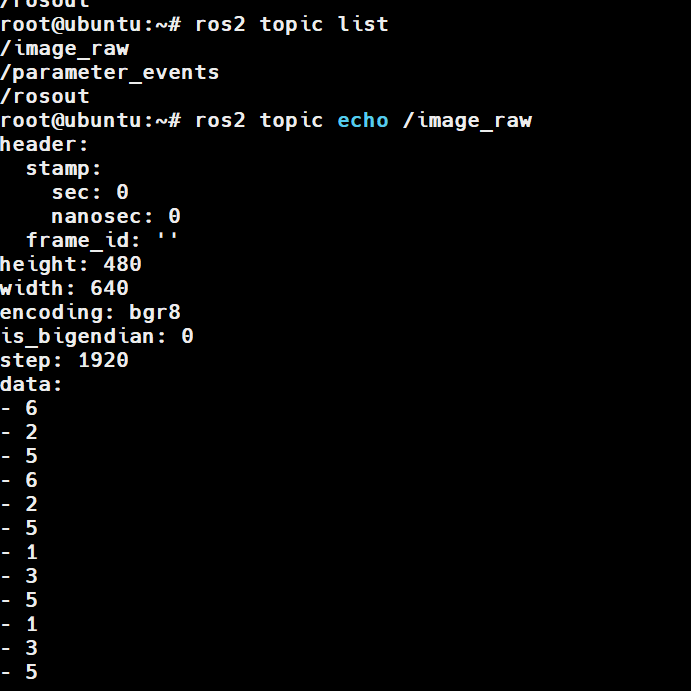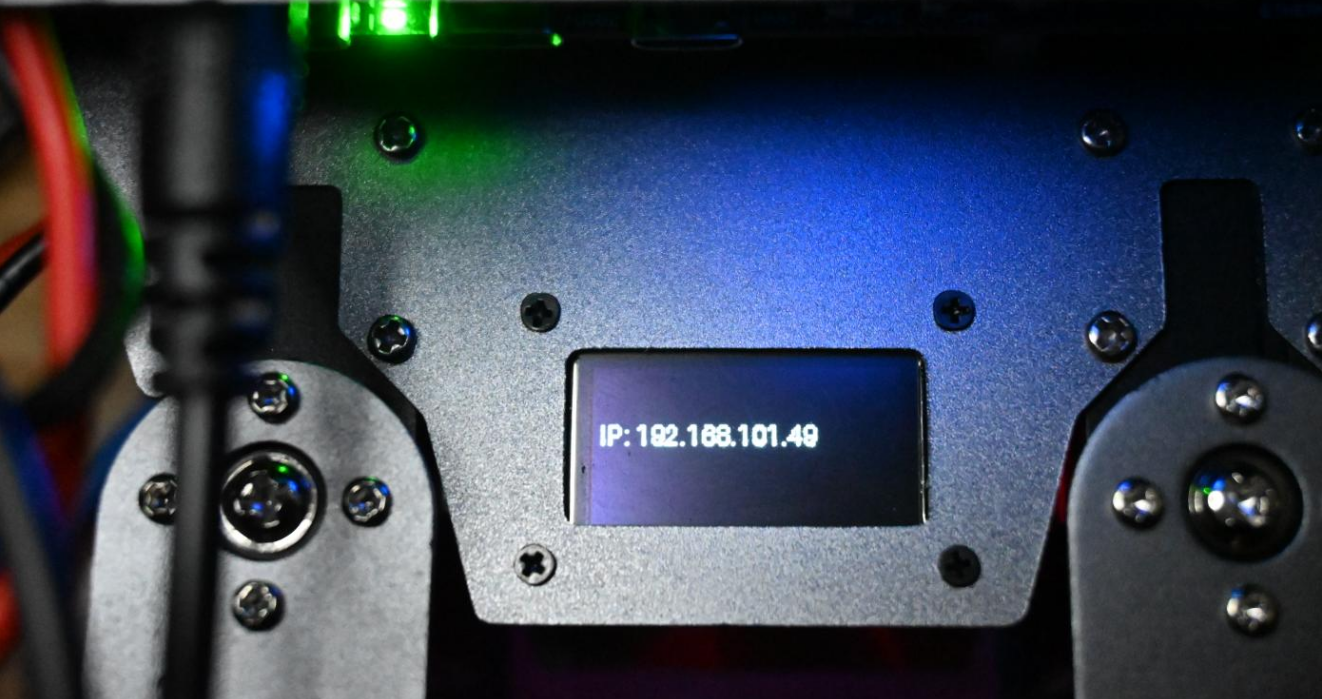Basic Programming Functions
Getting IMU Information
Running the Example
After powering on OriginMan, you can start the following command in MoboXterm or VSCode:
You will quickly see the IMU content being published in the terminal:

Code Implementation
The code implementing this functionality is in originman_demo/imu_print_node.py. Here's the detailed implementation:
#!/usr/bin/env python3
import sys
import os
# Add current script directory to sys.path
sys.path.append(os.path.dirname(os.path.abspath(__file__)))
import rclpy
from rclpy.node import Node
import time
from ros_robot_controller_sdk import Board
class IMUDisplayNode(Node):
def __init__(self):
super().__init__('imu_print_node')
self.board = Board(device="/dev/ttyS1", baudrate=1000000)
self.board.enable_reception()
self.get_logger().info("Board initialized")
time.sleep(1) # Wait for 1 second
self.timer = self.create_timer(0.1, self.display_imu_callback) # Read every 0.1 seconds
def display_imu_callback(self):
imu_data = self.board.get_imu()
if imu_data is not None:
ax, ay, az, gx, gy, gz = imu_data
self.get_logger().info(f"IMU - Accel: ({ax:.2f}, {ay:.2f}, {az:.2f}) g, Gyro: ({gx:.2f}, {gy:.2f}, {gz:.2f}) deg/s")
def main(args=None):
rclpy.init(args=args)
imu_print_node = IMUDisplayNode()
rclpy.spin(imu_print_node)
imu_print_node.destroy_node()
rclpy.shutdown()
if __name__ == '__main__':
main()
Image Publishing
Running the Example
After powering on OriginMan, you can start the following command in MoboXterm or VSCode:
You will quickly see the robot's image publishing output information in the terminal:

Code Implementation
The code implementing this functionality is in originman_demo/image_display_node.py. Here's the detailed implementation:
#!/usr/bin/env python3
# encoding:utf-8
import rclpy
from rclpy.node import Node
import cv2
from cv_bridge import CvBridge
from sensor_msgs.msg import Image
class ImagePublisherNode(Node):
def __init__(self):
super().__init__('image_publisher_node')
self.bridge = CvBridge()
# Create publisher for image_raw topic
self.publisher_ = self.create_publisher(Image, 'image_raw', 10)
# Open camera, 0 represents default camera
self.cap = cv2.VideoCapture(0)
if not self.cap.isOpened():
self.get_logger().error("Cannot open camera")
else:
# Create timer to publish images periodically
self.timer = self.create_timer(0.1, self.publish_image)
def publish_image(self):
ret, frame = self.cap.read()
if ret:
try:
# Convert OpenCV image to ROS image message
ros_image = self.bridge.cv2_to_imgmsg(frame, "bgr8")
# Publish image message
self.publisher_.publish(ros_image)
self.get_logger().info('Publishing image')
except Exception as e:
self.get_logger().error(f"Error converting image: {str(e)}")
else:
self.get_logger().error("Cannot read image frame")
def __del__(self):
# Release camera resources
if self.cap.isOpened():
self.cap.release()
def main(args=None):
rclpy.init(args=args)
image_publisher_node = ImagePublisherNode()
rclpy.spin(image_publisher_node)
image_publisher_node.destroy_node()
rclpy.shutdown()
if __name__ == '__main__':
main()
Controlling OLED
Running the Example
After powering on OriginMan, you can start the following command in MoboXterm or VSCode:
After successful execution, you will see the Wlan0 IP address displayed on the OLED screen on the back of OriginMan.

Code Implementation
The code implementing this functionality is in originman_demo/oled_display_node.py. Here's the detailed implementation:
#!/usr/bin/env python3
import rclpy
from rclpy.node import Node
import time
import numpy as np
import Adafruit_SSD1306
from PIL import Image, ImageDraw, ImageFont
import socket
import subprocess
class OledDisplayNode(Node):
def __init__(self):
super().__init__('oled_display_node')
# Initialize OLED display
self.screen = Adafruit_SSD1306.SSD1306_128_64(rst=None, i2c_bus=5, gpio=1, i2c_address=0x3C)
self.screen.begin() # Start screen
self.screen.image(Image.fromarray(np.zeros((64, 128), dtype=np.uint8)).convert('1'))
self.screen.display()
# Load font
self.font = ImageFont.load_default()
# Create timer to update display content every second
self.timer = self.create_timer(1.0, self.update_display)
def get_wlan0_ip(self):
"""Get wlan0 IP address, return None if not connected"""
try:
# Use ifconfig to get wlan0 IP address
result = subprocess.check_output(["ifconfig", "wlan0"], text=True)
for line in result.split('\n'):
if "inet " in line:
ip = line.split('inet ')[1].split(' ')[0] # Extract IP address part
return ip
return None # If no inet line, means not connected
except subprocess.CalledProcessError:
# If ifconfig wlan0 fails (e.g., interface doesn't exist or not enabled)
return None
def update_display(self):
"""Update OLED display content"""
# Create blank image
img = Image.new('1', (self.screen.width, self.screen.height), color=0)
draw = ImageDraw.Draw(img)
# Get wlan0 IP address
ip_address = self.get_wlan0_ip()
if ip_address:
# If IP address exists, display "IP: xxx.xxx.xxx.xxx"
display_text = f"IP: {ip_address}"
draw.text((3, 22), display_text, font=self.font, fill=255)
else:
# If not connected to network, display "Network not connected"
draw.text((3, 22), "Network not connected", font=self.font, fill=255)
# Update screen display
self.screen.image(img)
self.screen.display()
def main(args=None):
rclpy.init(args=args)
oled_display_node = OledDisplayNode()
rclpy.spin(oled_display_node)
oled_display_node.destroy_node()
rclpy.shutdown()
if __name__ == '__main__':
main()
